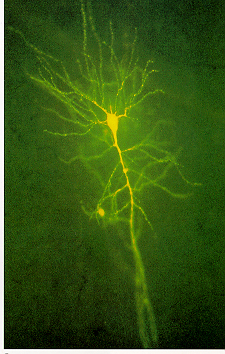|
|
| Line 15: |
Line 15: |
| ==Enablers:== | | ==Enablers:== |
|
| |
|
| 1. Research & Development: Mathimaticians, Psychologists, Neurosurgeons,...
| |
|
| |
|
| 2. Applications using artificial neural networks (e.g. sales forecasting, data validation, etc from NeuroDimension) [http://www.nd.com].
| |
|
| |
| 3. Funding from international institutes ( e.g. IST).
| |
|
| |
| 4. New technologies that enable profound research of the human brain activity.
| |
|
| |
|
| ==Inhibitors:== | | ==Inhibitors:== |
|
| |
|
| 1. Outcome ethical issues: Is there a danger developing technologies that might perform similar (thinking) functions as the human brain?
| |
|
| |
| 2. Research ethical issues: Is it ethical to perform research and do experiments on the human brain and its functions?
| |
|
| |
| 3. Lack of scope and focus: this new technology might create the next information society revolution, thus interest is high and widely spread over several industries.
| |
|
| |
|
| ==Paradigms:== | | ==Paradigms:== |
|
| |
|
| 1. Simple tasks can already be learned today by artificial neural networks. Further investigation, in the power of those systems as well as in the power of the combination with conventional computer systems, will increase the power of a connected world or the internet.
| |
|
| |
| 2. ANNs will disappear as black boxes into our daily lives, supporting us with simple decision making where making a mistake is allowed (children's level). To increase the learning effect and for control purposes, these boxes will be interconnected via the internet.
| |
|
| |
|
| | | |
| ==Experts:== | | ==Experts:== |
|
| |
|
| Prof. Dr. Hugo de GARIS,
| | Nicholas Negroponte |
| | | Chairman Emeritus, MIT Media Laboratory |
| Associate Professor,
| | Chairman, One Laptop per Child |
| | | Group: MIT Media Laboratory |
| Head, Brain Builder Group,
| | Office: E15-210 |
| | | Phone: (617) 253-5960 |
| Computer Science Dept.,
| | Fax: (617) 258-9212 |
| | | E-mail: nicholas@media |
| Utah State University, USU,
| | addresses are formatted username@media.mit.edu |
| | | URL: http://www.media.mit.edu/~nicholas |
| Old Main 423, Logan,
| | Assistant: Nia Lewis, niav@media |
| | | addresses are formatted username@media.mit.edu |
| Utah, UT 84322-4205, USA.
| |
| | |
| tel: + 1 435 797 0959
| |
| | |
| fax: + 1 435 797 3265
| |
| | |
| cell: +1 435 512 1826
| |
| | |
| degaris@cs.usu.edu
| |
| | |
| http://www.cs.usu.edu/~degaris | |
| | |
| | |
|
| |
|
| ==Timing:== | | ==Timing:== |
|
| |
|
| 1933: psychologist Edward Thorndike suggests that human learning consists in the strengthening of some (then unknown) property of neurons.
| |
|
| |
| 1943: first artificial neuron is produced (neurophysiologist Warren McCulloch & logician Walter Pits).
| |
|
| |
| 1949: psychologist Donald Hebb suggests that a strengthening of the connections between neurons in the brain accounts for learning.
| |
|
| |
| 1954: first computer simulations of small neural networks at MIT (Belmont Farley and Wesley Clark).
| |
|
| |
| 1958: Rosenblatt designs and develops the Perceptron, the first neuron with three layers.
| |
|
| |
| 1969: Minsky and Papert generalises the limitations of single layer Perceptrons to multilayered systems (e.g. the XOR function is not possible with a 2-layer Perceptron)
| |
|
| |
| 1972: A. Henry Klopf develops a basis for learning in artificial neurons based on a biological principle for neuronal learning called heterostasis.
| |
|
| |
| 1974: Paul Werbos develops the back-propagation learning method, the most well known and widely applied of the neural networks today.
| |
|
| |
| 1975: Fukushima (F. Kunihiko) develops a step wise trained multilayered neural network for interpretation of handwritten characters (Cognitron).
| |
|
| |
| 1986: David Rumelhart & James McClelland train a network of 920 artificial neurons to form the past tenses of English verbs (University of California at San Diego).
| |
|
| |
|
| ==Web Resources:== | | ==Web Resources:== |
Description:
The $100 laptop is an education project for creating an inexpensive laptop computer intended to provide every child in the world access to knowledge and modern forms of education.
The computers will be rugged, Linux-based, and so energy efficient that hand-cranking alone will generate sufficient power for operation. Ad-hoc wireless mesh networking may be used to allow many machines Internet access from one connection. The pricing goal is currently expected to start at around $135 not hitting the $100 mark until 2008. The laptops will be sold to governments and issued to children by schools on a basis of one laptop per child.
The laptop is being developed by the One Laptop Per Child (OLPC) organization. OLPC is a Delaware based, non-profit organization created by faculty members of the MIT Media Lab to design, manufacture, and distribute the laptops. OLPC was announced by Media Lab chairman and co-founder Nicholas Negroponte at the January 2005 World Economic Forum at Davos, Switzerland.
For more information: http://en.wikipedia.org/wiki/$100_laptop
Enablers:
Inhibitors:
Paradigms:
Experts:
Nicholas Negroponte
Chairman Emeritus, MIT Media Laboratory
Chairman, One Laptop per Child
Group: MIT Media Laboratory
Office: E15-210
Phone: (617) 253-5960
Fax: (617) 258-9212
E-mail: nicholas@media
addresses are formatted username@media.mit.edu
URL: http://www.media.mit.edu/~nicholas
Assistant: Nia Lewis, niav@media
addresses are formatted username@media.mit.edu
Timing:
Web Resources:
1.
2.
3. http://en.wikipedia.org/wiki/$100_laptop
4.
5.
6.
7.
